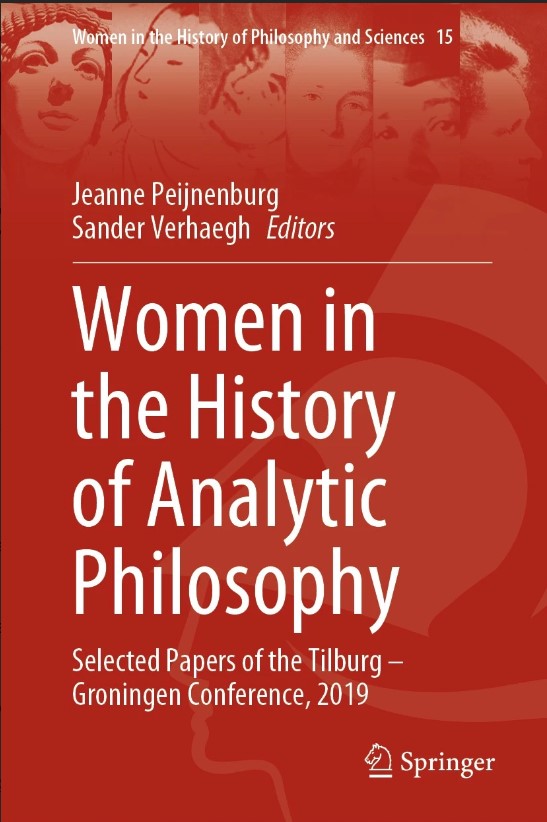New Book in our Springer Series
The present volume ‘Women in the History of Analytic Philosophy‘ collects the papers presented at two events: the Tilburg-Groningen conference ‘Women in the History of Analytic Philosophy’ and the Autumn School of the Dutch Research School of Philosophy ‘Beyond the Canon: Unexplored Topics and Forgotten Thinkers’. Both events took place at Tilburg University from 25 to 27 October 2019. They were attended by scholars and students interested in the philosophy and the role of women philosophers in the early analytic philosophy.
After Sander Verhaegh’s Jeanne Peijnenburg’s nice introduction on the difficulties faced by women in academia and especially in analytic philosophy, the book opens with James Pearson’s chapter, which is devoted to Victoria, Lady Welby (1837‒1912), the inspirer of the significs movement who has been forgotten by analytic philosophers. Similarities between Lady Welby’s ideas and P. F. Strawson’s connective model of analysis are also pointed out. The third chapter, written by Gary Ostertag, is devoted to E. E. Constance Jones and her law of significant assertion. The aim of the article is to place her distinction between connotation and denotation, which predates Frege’s famous distinction between Sinn and Bedeutung, in the context of this law. The fourth chapter, written by Dilek Kadioglu, focuses on the figure of Emmy Noether (1882‒1935) and the development of category theory that paved the way for contemporary philosophy of mathematics. Andrea Reichenberger deals with Rózsa Péter’s recursion theory, her popular sketch of Gödel’s proof, and its contextualization within Hilbert’s formalism. Michael E. Cuffaro deals with the neo-Kantian and neo-Friesian philosopher Grete Hermann and her interaction with the founders of quantum mechanics in the early period of the theory’s development. Katarina Mihaljevic focuses on Rose Rand. Her philosophical work, although considered relevant by experts in her field, has never entered the philosophical canon or found a place in any textbook on the history of analytic philosophy. Frederique Janssen-Lauret writes about Susan Stebbing’s metaphysics, philosophy of science, and views on common-sense truths. The aim of the chapter is to highlight the points of originality of the philosopher who, until now, has been considered simply a disciple of Moore or Whitehead. The aim of chapter 9 by Naomi Kloosterboer is to propose an alternative G. E. M. Anscombe-inspired view of reasoning. Sander Verhaegh deals with Susanne K. Langer, an American analytic philosopher who is considered by leading European philosophers of science such as Moritz Schlick, Rudolf Carnap and Herbert Feigl to be one of the most important allies in the United States. The eleventh chapter, written by Gregory Lavers, examines the role of Ruth Barcan Marcus in both the analyticity and (meta-)ontology debates.
The introduction and the ten chapters in this volume illustrate the various ways in which women contributed to the emergence of analytic philosophy. They show that women scholars were active at all stages of its development, from its beginnings in Cambridge to the first decades after World War II, when analytic philosophy began to dominate American philosophy departments.
Journal entry written by Dr. Michele Vagnetti
Reference:
Peijnenburg, Jeanne & Verhaegh, Sander (2023): Women in the History of Analytic Philosophy. Basel: Springer Nature Switzerland AG.
You cannot copy content of this page








